New Mexico is a United States land with a rich history, including the Taos Pueblo community, which was inhabited by humans for several millennia. But the fifth-largest state not only has fascinating history and culture. It also has interesting landscapes and topography, ranging from deserts to heavily forested mountain regions.
With five big national forests and two national parks, it’s no surprise the Land of Enchantment hosts about 546 bird species that occur either year-round or temporarily.
Among the wide variety of feathered friends that flock in New Mexico is a pretty impressive owl population for you to study and watch. The eastern screech-owl and barred owl can occasionally be found in New Mexico, but since they’re somewhat rare in the state, we only chose to highlight the 13 other species who are permanent residents. Keep reading, and we’ll tell you all about these mighty birds of prey.
Northern Saw-Whet Owl

- Scientific Name: Aegolius acadicus
- Length: 6.7-8.7 inches
- Weight: 1.9-5.3 ounces
- Wingspan: 16.5-22.2 inches
New Mexico’s forests make an excellent habitat for the northern saw-whet owl, providing the small bird with perfect nesting spots.
This owl has mottled brown plumage and bright yellow eyes, and though it’s quite shy, you can usually hear its call at night.
When it’s time to eat, the northern saw-whet owl usually feeds on small mammals like voles, mice, and shrews. However, it can supplement its diet with songbirds, especially during migration. Its predators include bigger birds of prey, including the great horned owl, falcons, and hawks.
Flammulated Owl
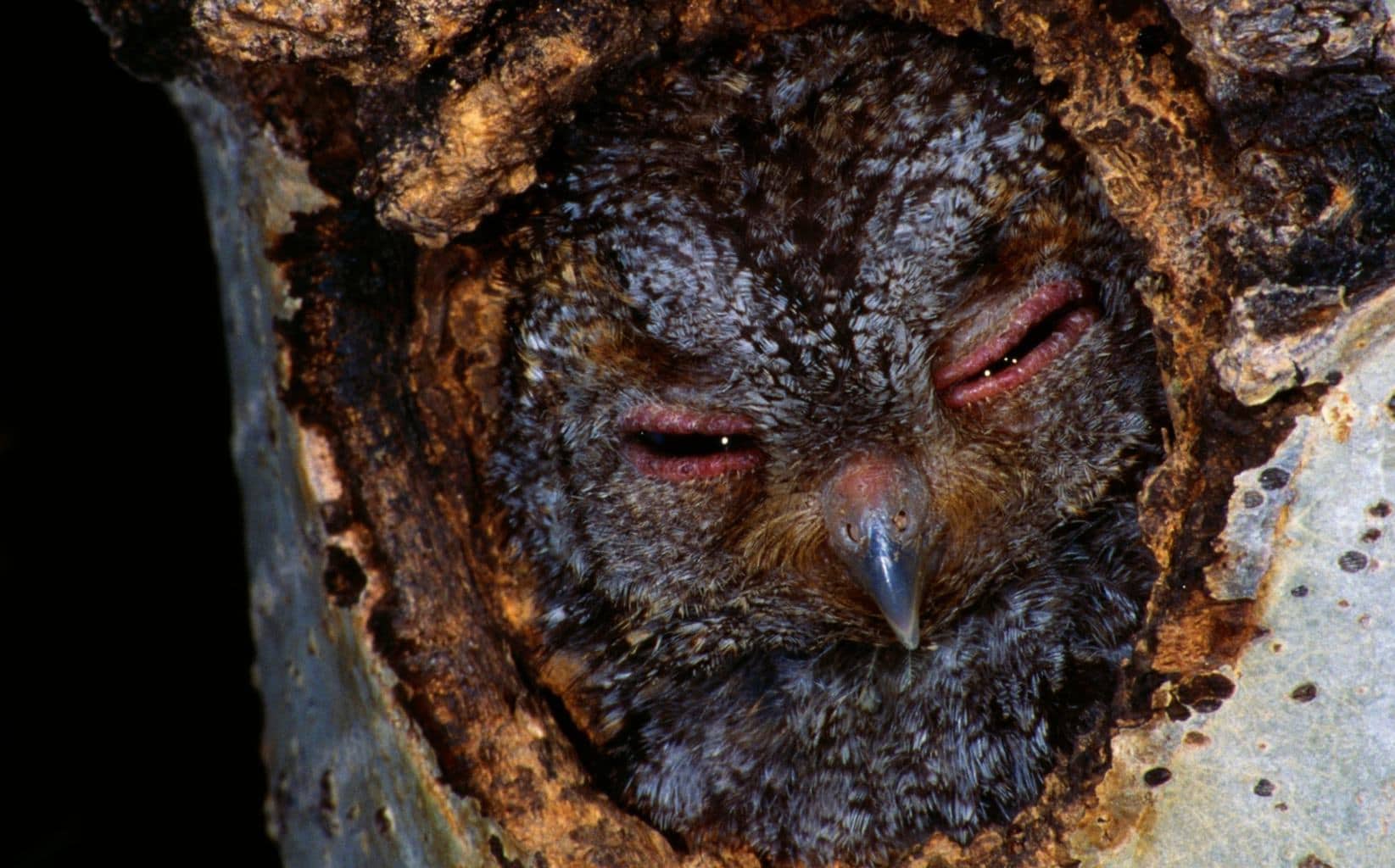
- Scientific Name: Psiloscops flammeolus
- Length: 6 inches
- Weight: 1.8-2.3 ounces
- Wingspan: 14 inches
For such a small bird, the flammulated owl’s wings are quite big. You’ll find it in New Mexico, where its prey is abundant, in the summertime, and you’ll recognize it by its greyish-brown and white spotted plumage that provides excellent camouflage.
While its camouflage skills are impressive, a birdwatcher may find them frustrating, as that ability plus its tiny size and shy nature make this owl difficult to spot.
Flammulated owls’ favorite food group is insects, and they rarely add mammals to their diets. The nocturnal bird has a rather large windpipe that enables it to produce a hoot that makes predators and other animals think it’s bigger than it is.
Barn Owl
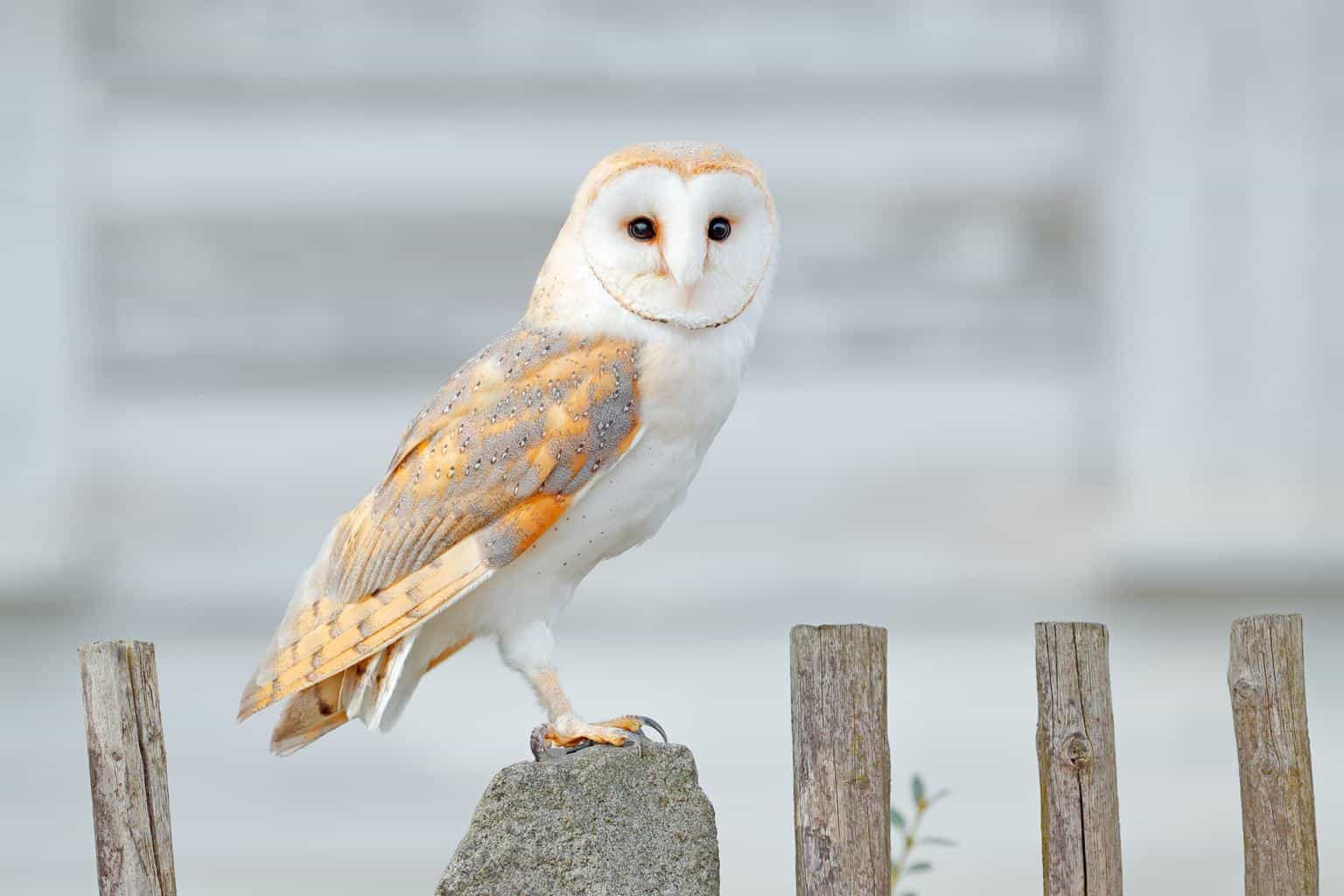
- Scientific Name: Tyto alba
- Length: 13-15 inches
- Weight: 14.1-24.7 ounces
- Wingspan: 31-37 inches
While all other owls belong to the true owl family, the barn owl has a unique family of its own. This species is a permanent resident of New Mexico and can easily be found on farmland. The nocturnal bird likes to hunt small mammals.
Barn owls have heart-shaped faces and a scary ghostly look that’s emphasized by their pale buff-grey plumage. Unlike other owls, it doesn’t hoot most of the time.
Great Horned Owl

- Scientific Name: Bubo virginianus
- Length: 17-25 inches
- Weight: 32-88 ounces
- Wingspan: 3-5 feet
The great horned owl can be found dwelling in a variety of habitats across New Mexico, including canyonlands and flat country, as well as the state’s national parks and forests.
The large nocturnal bird has mottled grey-brown plumage and bars on its underside for better camouflage. The horns mentioned in the species’ name reference the ear-like tufts of feathers on top of its head. Those aren’t just for decoration, though; the tufts serve different functions!
Compared to other owl species, the great horned bird has one of the most diverse diets, as it feeds on a wide variety of mammals and birds. It even feeds on other owls, and it’s the only one of its kind known to feed on skunks (this is thanks to the bird’s weak sense of smell).
Long-Eared Owl

- Scientific Name: Asio otus
- Length: 12-16 inches
- Weight: 7.8-15.3 ounces
- Wingspan: 34-40 inches
The long-eared owl’s primary habitat in New Mexico includes rocky sites, and you’ll know the bird by its slender body, buff-black plumage, dark face, and long ear tufts on the top of its head.
Birds of this species feed on birds and animals they can catch from the ground, killing the prey by biting the area at the back of the skull. Long-eared owls have incredible hearing that enables them to catch prey in the darkness.
When it’s time to nest, these birds don’t build one of their own. Instead, they use a nest or tree cavity abandoned by another bird or a burrow dug by squirrels.
Short-Eared Owl

- Scientific Name: Asio flammeus
- Length: 13-17 inches
- Weight: 7.3-16.8 ounces
- Wingspan: 33-43 inches
The short-eared owl usually spends the winter months in New Mexico, where it has plenty of space to hunt in open areas. It’s a medium-sized owl with brown spotted plumage, and although it has ear-like tufts of feathers like the long-eared species, they’re so short that they’re almost invisible.
The short-eared owl’s primary food source is small mammals like voles, but it may also eat songbirds. Unlike most owls, this one builds its own nest, but unfortunately, its nesting site is usually subject to attacks from foxes, dogs, and crows that try to steal the eggs.
Whiskered Screech-Owl
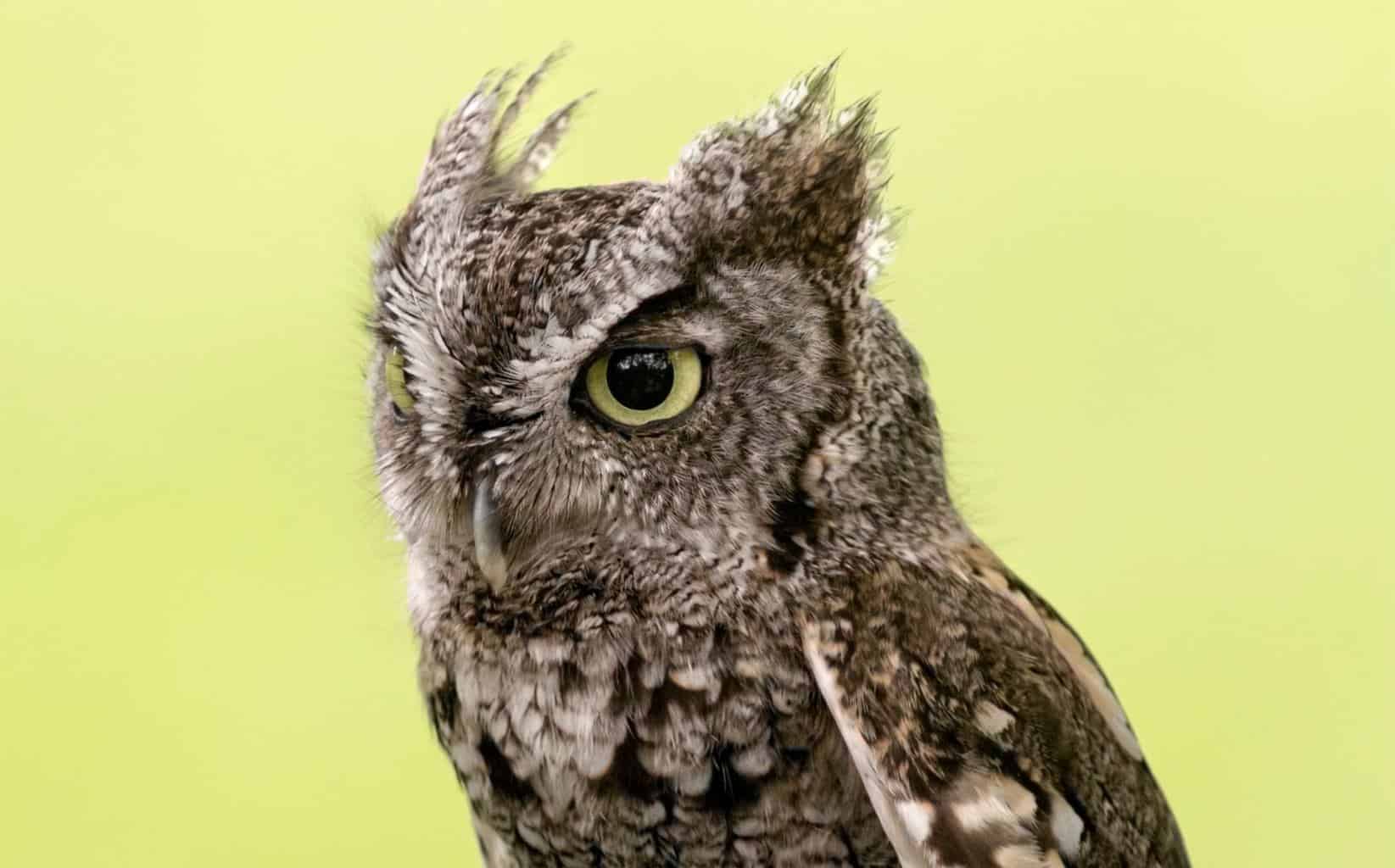
- Scientific Name: Megascops trichopsis
- Length: 6.9-7.4 inches
- Weight: 3-3.5 ounces
- Wingspan: 16-20 inches
The whiskered screech-owl belongs to the screech-owl family, which is native to the Americas…but you probably already knew that, given the bird’s name. It’s a small owl that has a stocky body and dark grey or brown feathers that are perfect for camouflage.
There’s little known about this owl because it’s so hard to find, but what we have discovered is that whiskered screech-owls perch until they can dive down to catch their prey; they can even catch a bird while they’re flying!
This species’ diet is comprised of small mammals and insects, and though these birds don’t build nests, they lay eggs in an old tree’s naturally occurring cavities or a woodpecker hole.
Western Screech-Owl

- Scientific Name: Megascops kennicottii
- Length: 8.7 inches
- Weight: 5 ounces
- Wingspan: 22 inches
The western screech-owl has a body covered in bluish-grey, dark-grey, or brown feathers and small ear tufts. It’s rather challenging to locate this bird because its coloring allows for the perfect camouflage, so it’s easier to hear a screech-owl than it is to see it.
When it’s time for dinner, the western screech-owl usually looks for a small mammal, but since it’s an opportunistic hunter, it can also feed on amphibians, songbirds, and invertebrates.
Northern Pygmy-Owl
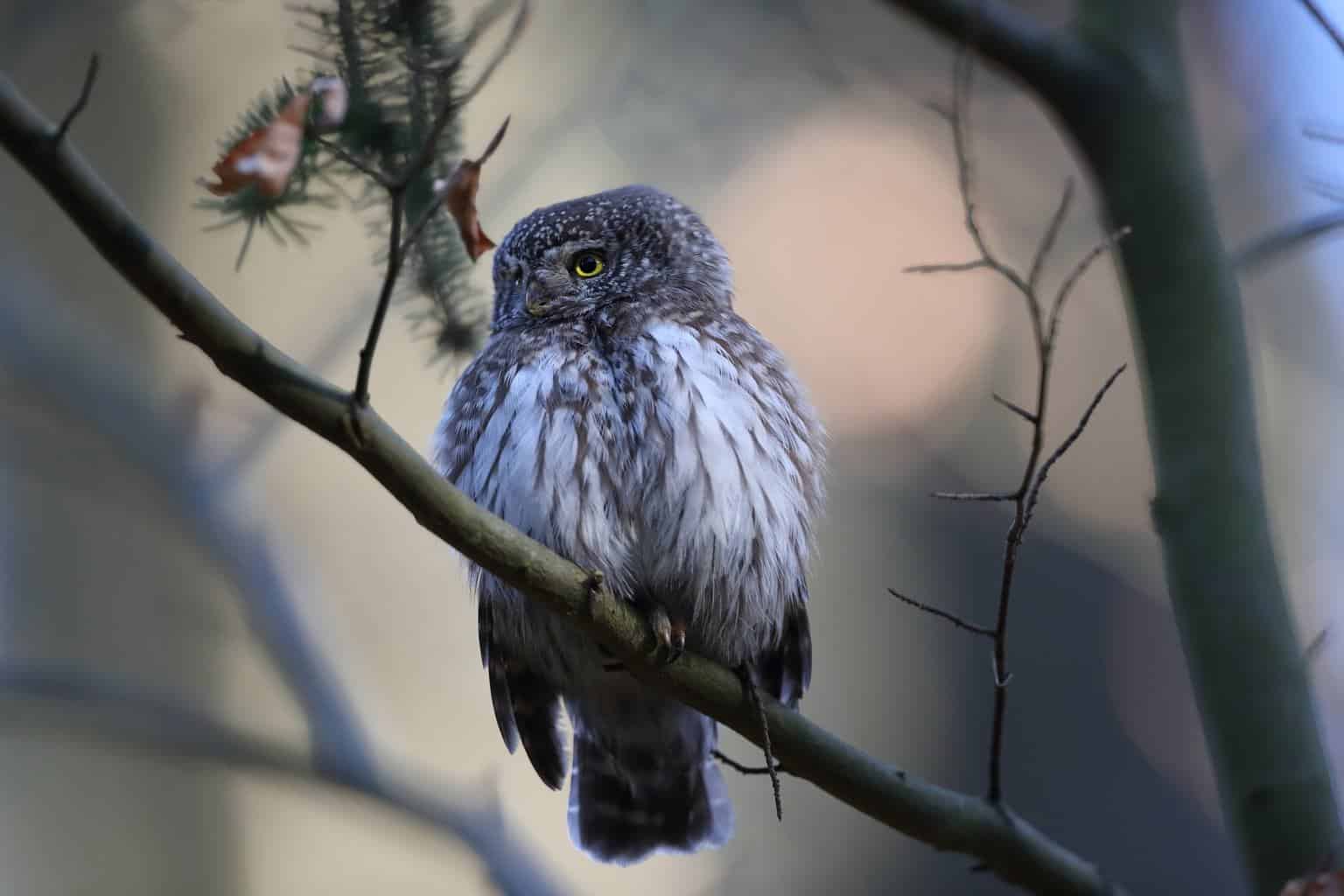
- Scientific Name: Glaucidium californicum
- Length: 6.3-7.1 inches
- Weight: 2.1-2.5 ounces
- Wingspan: 16 inches
The northern pygmy-owl is part of New Mexico’s permanent population of owls, but it changes habitats depending on the availability of its prey. But if you’re determined to find it, your best chances lie in the mountain range.
Unfortunately, this owl is subject to danger because of forestry activities that reduce available nesting sites.
You’ll find the northern pygmy-owl feeding on small birds like sparrows and hummingbirds.
Elf Owl
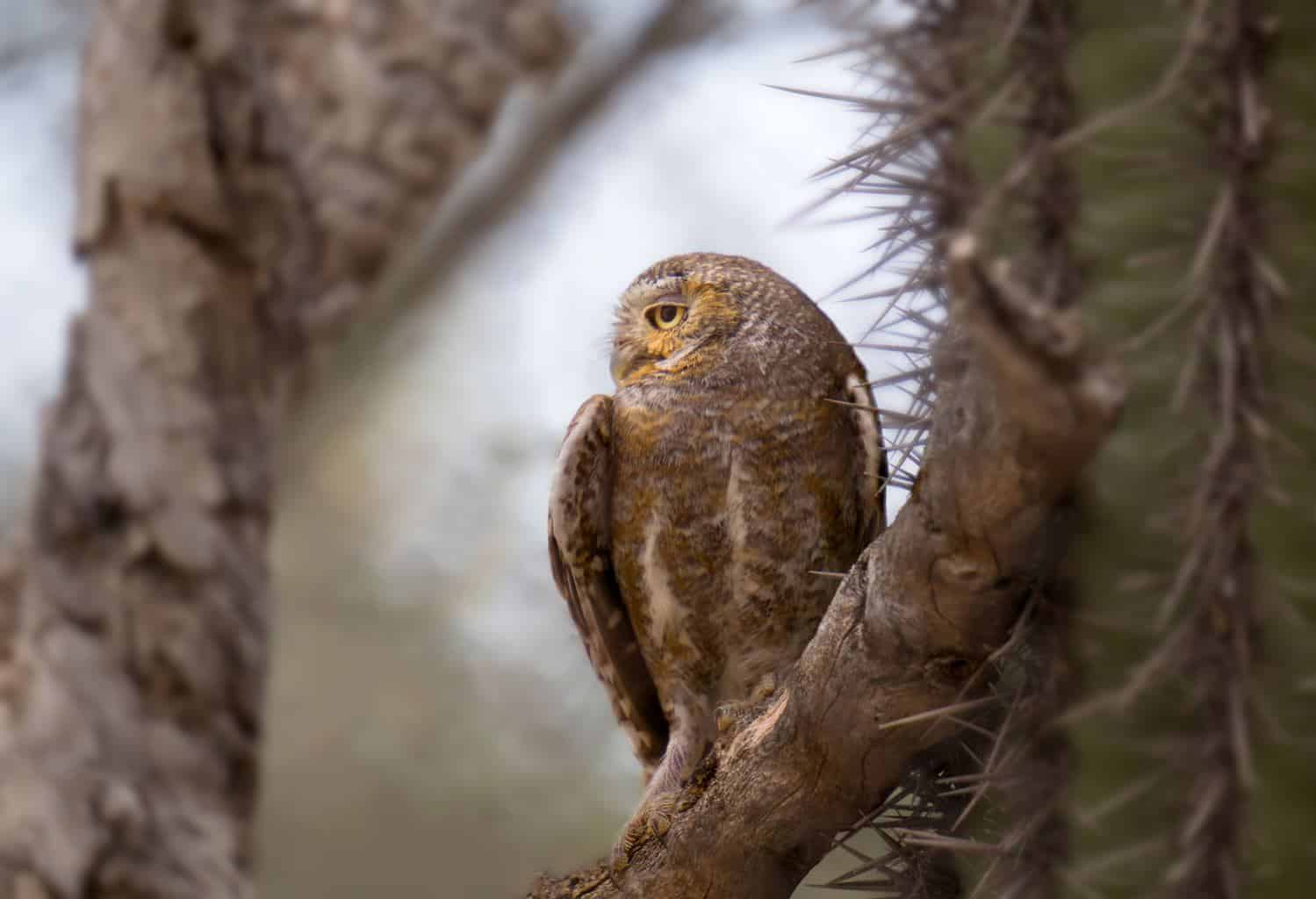
- Scientific Name: Micrathene whitneyi
- Length: 4.9-5.7 inches
- Weight: 1.4 ounces
- Wingspan: 10.5 inches
The elf owl occurs in limited numbers in the Sonoran Desert habitat, and it’s one of the smallest owls in the world. Its size isn’t the only thing that makes this bird recognizable; you’ll also be able to point it out by its greyish-brown body and yellow eyes.
Most of the time, elf owls hunt for their prey at night, flying silently and depending on their amazing sense of hearing to find victims. These owls feed on invertebrates like moths and scorpions that can be found in the desert. The bird is not only a skilled hunter, but it’s good at hiding from predators; when it’s in danger, it pretends to be dead.
Burrowing Owl
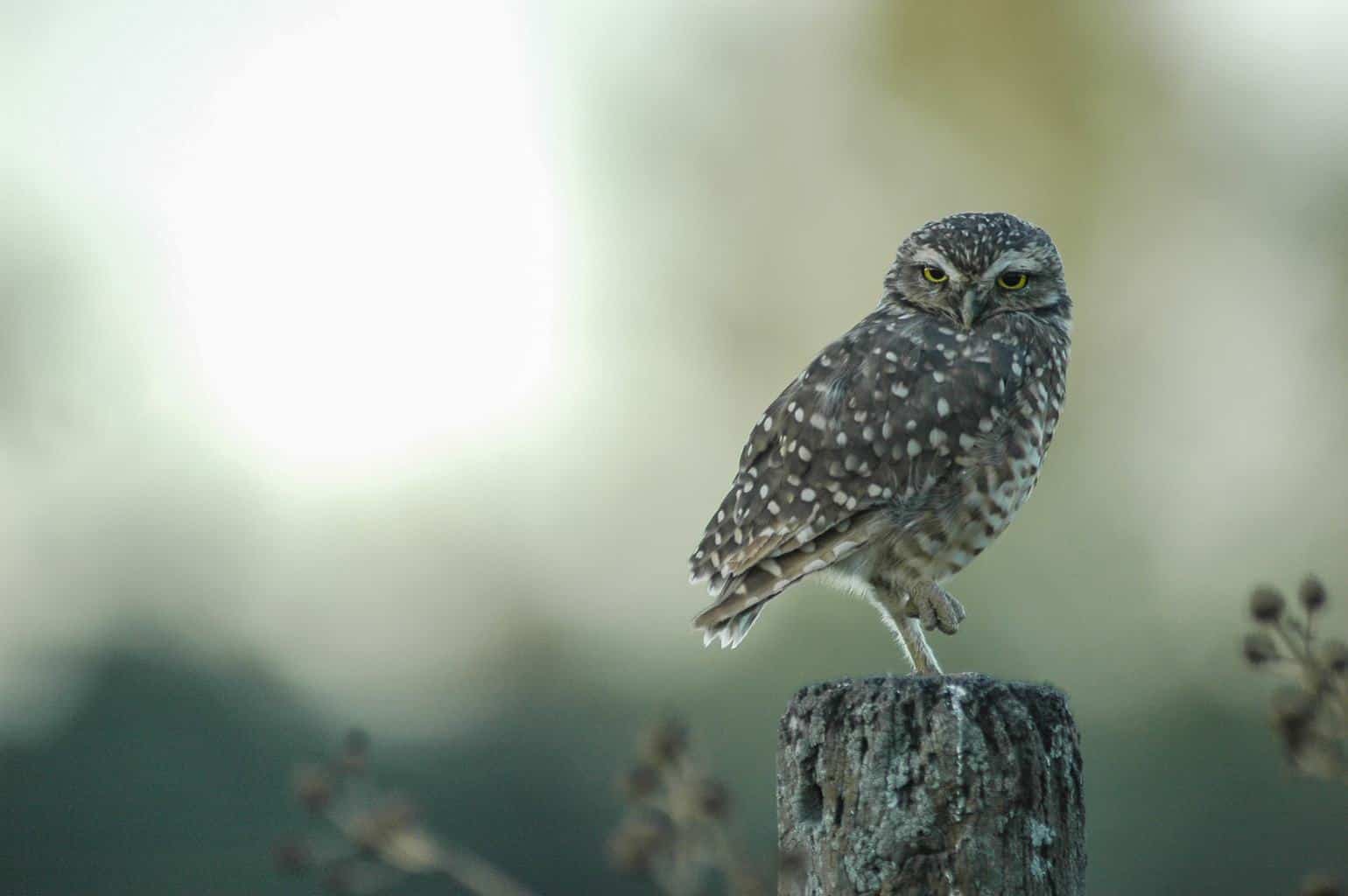
- Scientific Name: Athene cunicularia
- Length: 7.5-11 inches
- Weight: 4.9-8.5 ounces
- Wingspan: 20-24 inches
The burrowing owl can be found in the northern areas of New Mexico. It lives in burrows dug by the prairie dog or badger.
The sand-colored bird hunts its prey at dawn or dusk. It mainly feeds on small invertebrates and vertebrates, including insects, lizards, birds, and mammals. It also eats dung beetles it caught by lining its nest with feces.
Mexican Spotted Owl
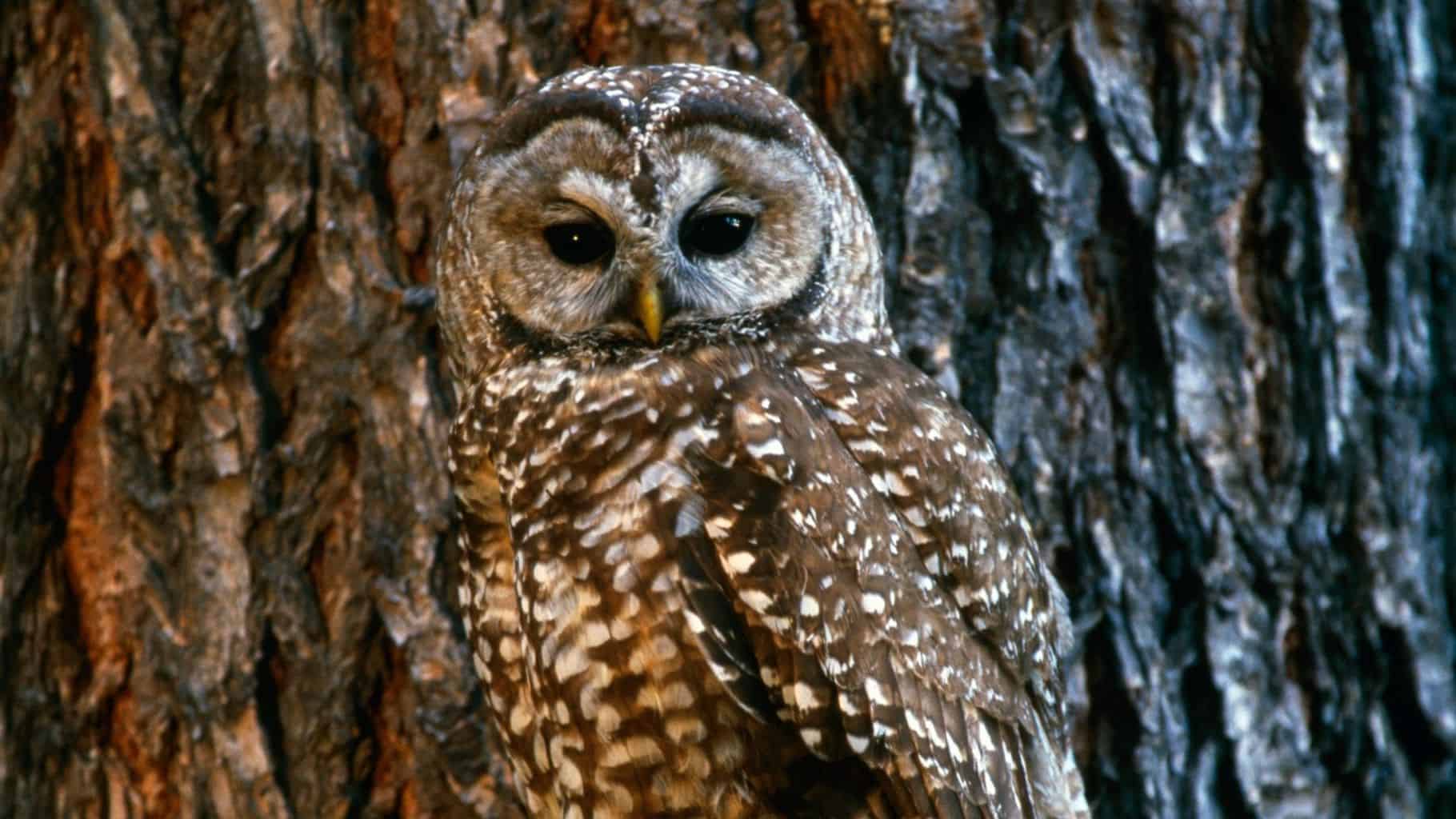
- Scientific Name: Strix occidentalis lucida
- Length: 16-19 inches
- Weight: 19.5-23 ounces
- Wingspan: 42-45 inches
The Mexican spotted owl is one of the spotted owl subspecies, which can be found in other parts of the United States. Unfortunately, it’s considered a species of concern due to habitat loss or delayed reproductive maturity.
These owls have brown plumage with brown and white spots. They roost during the day and hunt by dusk or at night. Mexican spotted owls feed on small mammals, but they can also feed on amphibians, birds, and arthropods.
Boreal Owl

- Scientific Name: Aegolius funereus
- Length: 8.7-10.6 inches
- Weight: 3.3-7.6 ounces
- Wingspan: 20-24 inches
In New Mexico, the boreal owl can be found at elevations that measure 10,000 feet or higher. It’s rarely seen because of its shy behavior, and it remains silent most of the time, except for the weeks between February and April when it produces a long call.
The brown-bodied, yellow-eyed bird feeds on small mammals, birds, and insects, and it’s preyed upon by larger raptors like hawks and bigger owls.
Female owls can be twice the size of their male counterparts and find new roosting sites daily.
Wrap Up
The time you spend in New Mexico provides you an excellent chance to study the amazing birds that live in the state’s diverse habitats. Next time you enter the Land of Enchantment, watch closely and listen for low hoots; you just might stumble across a curious owl.

